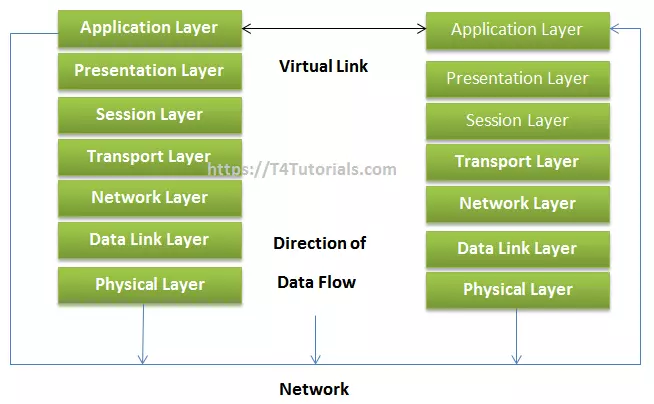Advantages and disadvantages of OSI reference Model
OSI model
OSI stands for open system interconnection. OSI model is a standard model that can allow two different kinds of systems to communicate with each other whether their architectures are the same or different.
OSI model is considered a complete communication model because it can cover all aspects of data communication. OSI model was developed by ISO. ISO stands for International standard organization. In 1983 ISI model was proposed and developed.
7 layers of OSI models are very famous in data communication. All these layers perform a specific task in data communication. OSI model is also known as the reference model.
These seven layers of the OSI model are further divided into two groups known as the upper layer and lower layer.
What is the lower layer in the OSI model?
The lower layer tries to answer the questions of how the communication across the network can actually occur.
What is Upper Layer in the OSI model?
- The upper layer tries to answers the following questions;
- user applications
- The files representation before data transfer
Advantages of OSI reference Model
There are many advantages of the OSI reference model. Some of those are mentioned below;
- It is a truly generic model.
- The OSI model works as a standard model in data communication.
- OSI model is helpful if you want to buy the required software or hardware to build your own network.
- Layers in the OSI model architectures can be distinguished and every layer has its own importance according to their interfaces, services, and protocols.
- The OSI divides the all process of data communication into simpler and smaller
- The protocols are hidden in the OSI model, so any protocols can be implemented in the OSI model. OSI model is a standard model, so it can adapt all features of other protocols.
- The OSI model can facilitate the followings;
-
- Component development
- Concept of Modularity
- Design of the network
- Troubleshooting of the network
- The OSI model increases the learnability of the network.
Disadvantages of the OSI model
There are many disadvantages to the OSI reference model. Some of those are mentioned below;
- The OSI model is a theoretical model. Sometimes it can be a difficulty if the appropriate technology is not available.
- The OSI restricts its practical implementation.
- The OSI model is a very complex model.
- The initial implementation of the OSI model is slow.
- The initial implementation of the OSI model is costly.
- There is an interdependence among the OSI layers. OSI layers cannot work in parallel. Each upcoming layer needs to wait to receive the data from its predecessor layer. For an example the application layer receives the data from the presentation layer and the presentation layer needs to wait to receive the data from the session layer and so on.
- Some layers like the presentation layer and session layer have very little functionality when practically deployed.
- The duplication of services in various layers is a problem in the OSI model. Some Services are offered by multiple layers. Some of these services are mentioned below;
- Flow control
- Error control
- addressing etc.
- The OSI model is a theoretical model and does not offer appropriate solutions for the practical implementation of the networks.
- The OSI model did not fulfill the practical needs. So the OSI model was labeled as inferior quality.
If you are interested to read the physical layer in detail, then you can click here.
